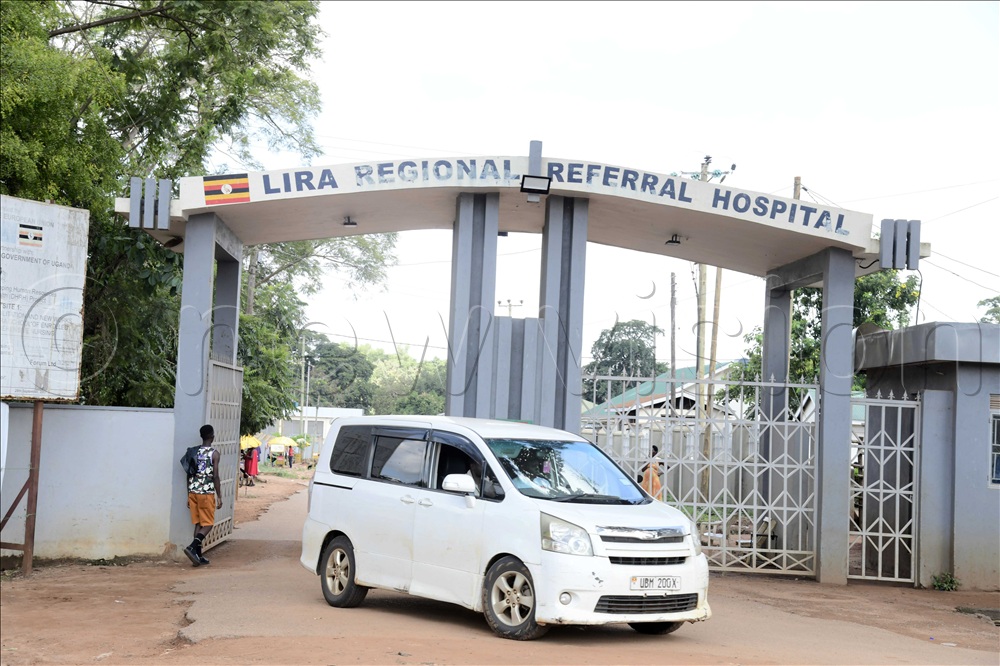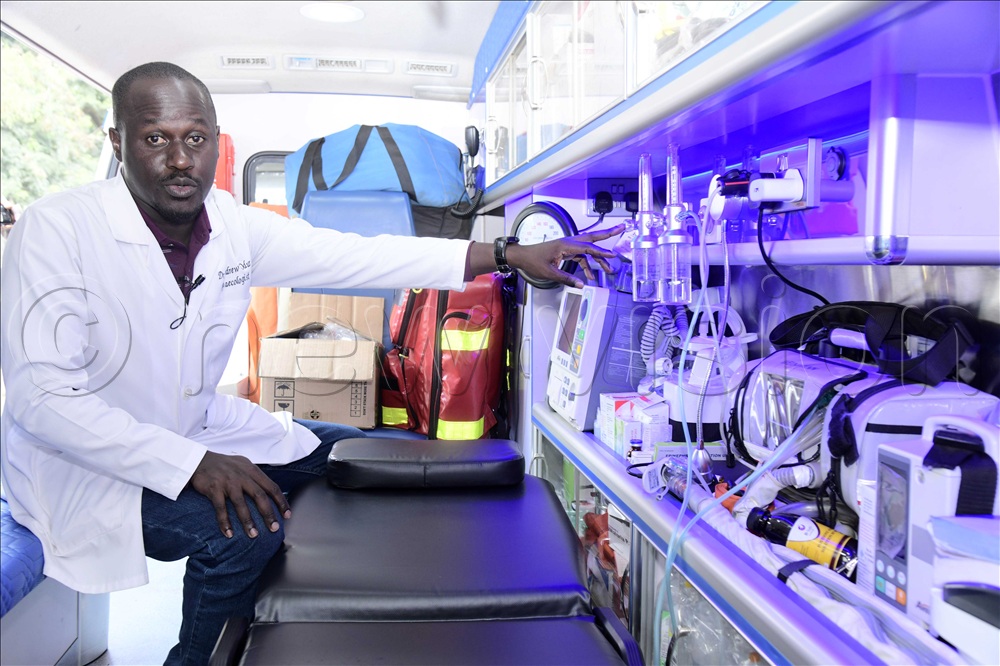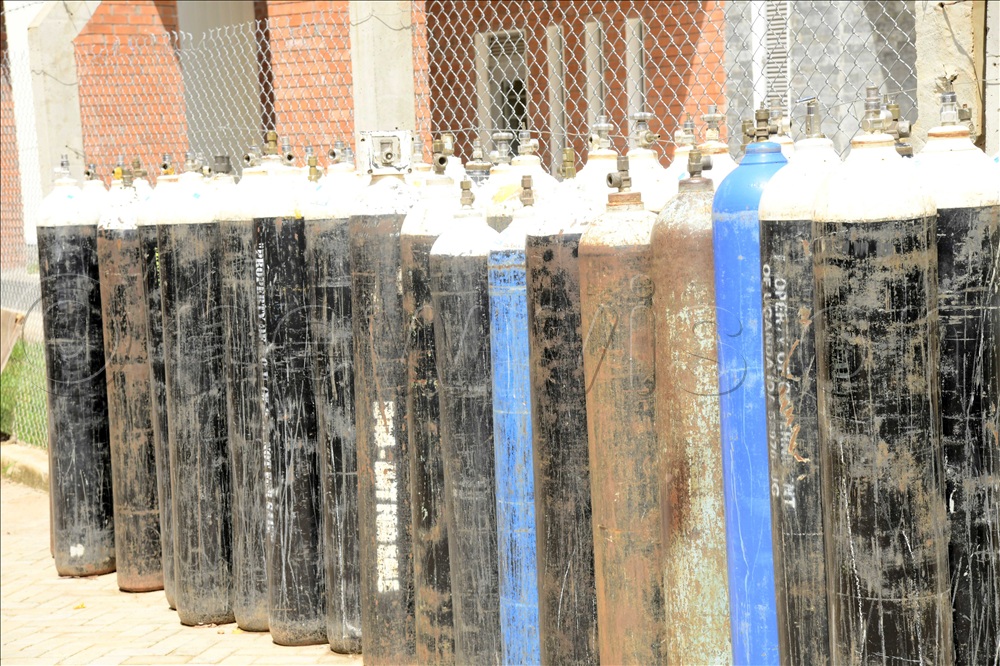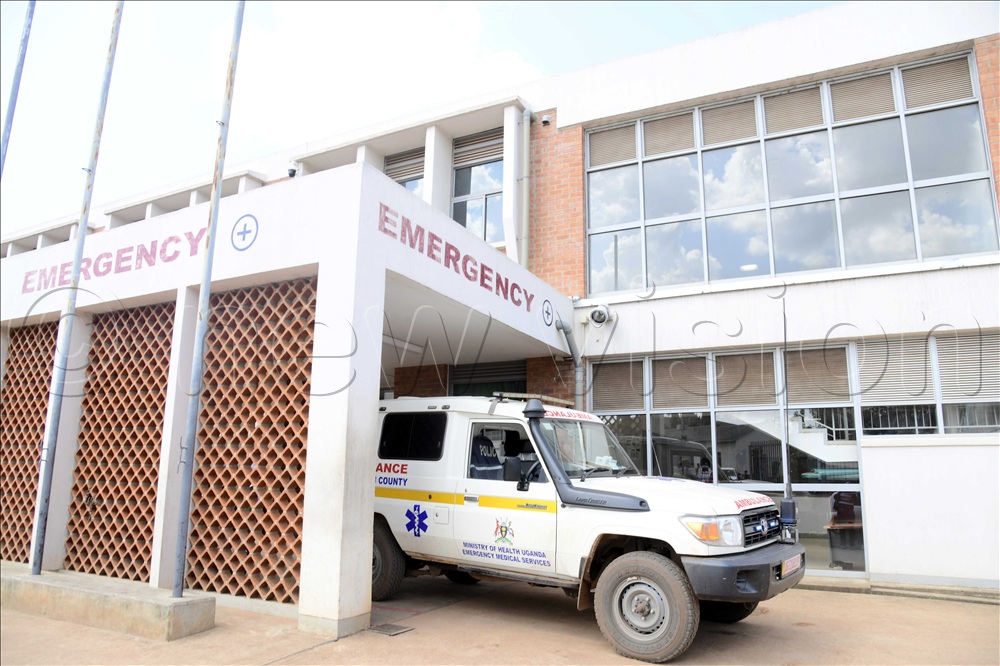Lira Regional Hospital sees 10 per cent decline in maternal mortality
This breakthrough is largely pinned on the introduction of a state-of-the-art Type C advanced life support ambulance, the sole unit of its calibre serving the area.
Medical workers attending to a sick baby in the intensive care unit of Lira Hospital. The Referral hospital has been equipped to meet the high demand for services. (Photos by Eddie Ssejjoba)
By Nelson Mandela Muhoozi
Journalists @New Vision
________________
In the heart of Lango region, Lira Regional Referral Hospital is rewriting the narrative on maternal health by achieving a 10 per cent reduction in deaths related to pregnancy and childbirth complications over the past financial year.
This breakthrough is largely pinned on the introduction of a state-of-the-art Type C advanced life support ambulance, the sole unit of its calibre serving the area.

The revelation came during a routine media tour coinciding with President Yoweri Museveni's campaign trail through Lango, where journalists got an up-close look at the hospital's operations.
Hospital director Dr Andrew Odur didn't mince words about the ambulance's role in turning the tide.
“Before this, we would often get expectant mothers arriving in dire straits because our standard ambulances just could not provide the intensive care needed on the route,” he told the journalists.
With this Type C model in play, he revealed that they have pulled countless women back from the brink.

“That 10 per cent drop in maternal mortality is lives preserved, families kept whole,” he said.
On the road rescues
What sets the Type C ambulance apart from the more ubiquitous Type B versions is its arsenal of lifesaving technology, which includes a built-in ventilator for breathing support, a defibrillator to restart faltering hearts, and sophisticated monitors that track vital signs in real time.
These features mean paramedics can deliver hospital-level interventions while racing against the clock, according to Odur.
“Imagine a mother in labour, whose breathing suddenly fails. We have got the ventilator to step in immediately,” Odur illustrated.
He continued, “Or if cardiac arrest hits, the defibrillator gives us a fighting chance. We can even push IV fluids, antibiotics, or blood transfusions right there in the vehicle, stabilising patients before they even hit our doors.”
However, for a sprawling region home to more than 2.65 million residents across 10 districts, one ambulance feels like a drop in the ocean.
Some of the gas cylinders in stock at Lira Referral Hospital.
Odur was honest about the shortfall: We are stretched thin. To truly blanket Lango with this level of emergency response, we need a fleet of these Type C units. Lives are still slipping through the cracks because of delays.
Oxygen production
The hospital’s progress extends beyond wheels. It has also fortified its oxygen lifeline. A modern plant now churns out up to 100 cylinders daily, not only fuelling Lira's wards but extending supplies to adjacent areas like Teso, Karamoja, and Kiryandongo in Bunyoro.
“Gone are the days of begging the National Medical Stores (NMS) and enduring endless delays,” Odur reflected, adding, “Oxygen flows straight to bedsides via pipelines, and we have got a stockpile of over 100 ready cylinders. It has transformed how we handle respiratory crises, from newborns in distress to severe pneumonia cases.”
Premier laboratory
Adding another layer to Lira’s healthcare revival is its newly accredited satellite laboratory, backed by World Bank funding and certified by the South African National Accreditation System (SANAS).
It is not an average testing site. It is a powerhouse for diagnostics, covering everything from organ function assessments and cancer screenings to reproductive health checks and immunology panels.
“In the last financial year, we ran upwards of 300,000 tests,” Odur shared proudly, and added, “Early detection is key. This lab lets us spot issues fast, tailor treatments precisely, and monitor progress without guesswork.”
The lab emerged from the Uganda COVID-19 Response and Emergency Preparedness Project (UCREPP), overseen by the Ministry of Health.
Dr. Adnrew Odur, the hospital administrator of Lira Referral Hospital explaining about the interior of a modern ambulance. 
At a cost of sh4.5 billion, it is designed to boost both clinical diagnostics and regional research, positioning Lira as a diagnostic hub for northern Uganda.
Humble beginnings
Founded in 2003, Lira Regional Referral Hospital has evolved dramatically. Specialist staff have ballooned from a mere two to 17 in the last five years alone, now boasting experts in gynaecology, paediatrics, orthopaedics, ear-nose-throat care and ophthalmology.
With 456 beds and a team of 322, the hospital caters to over 2.56 million people, though it is operating at just 79% of its ideal staffing levels. Government pledges hint at expansions on the horizon to bridge that gap.
Key recent upgrades
Several upgrades have recently been done to boost the facility’s operations. The upgrades include a revamped outpatient and emergency ward, streamlining initial care for walk-ins and crises alike, the aforementioned satellite lab, the oxygen production plant, ensuring no patient gasps for air and a soon-to-launch ambulance dispatch center, poised to orchestrate regional responses.
Digitising healthcare for smarter, safer operations
Embracing the digital age, the hospital has rolled out electronic medical records, curbing waste and sharpening oversight.
Prescriptions now route exclusively through the system, slashing stockouts and deterring pilferage.
“It has cut down on frivolous scripts and the chaos of paperwork,” Odur explained, further noting that “Costs are down, continuity of care is up as patients’ histories are at our fingertips, leading to better outcomes.”
New dispatch hub
The crown jewel of these enhancements is the ambulance dispatch centre (ADC), now built and gearing up for full operation. Equipped with GPS tracking, it promises to revolutionise how emergencies unfold across Lango, according to Odur.
“A distress call from a remote spot like Otuke? We will pinpoint the closest rig and send it flying,” Odur described and further noted, “Plus, every transfer now mandates a skilled health worker onboard to monitor and intervene as needed. It is about quality, not just speed.”
Fostering compassion in health caregivers
The hospital is investing in cultural shifts, training programmes and dialogues aimed to cultivate empathy and professionalism.
“We are not ignoring the feedback; we are tackling it head-on,” Odur affirmed.
"Staff are responding, and it is rebuilding trust. When patients feel valued, they engage more in their care, and everyone wins,” he explained.
Healthcare pledges for Lango
During his campaign rally in Apac and Kwania on Friday, October 3, 2025, President Yoweri Museveni, who is the flag-bearer for the National Resistance Movement (NRM) in the 2026 General Election, made several healthcare commitments in the Lango region.
Delving into health commitments, Museveni outlined a comprehensive plan to elevate services in Apac. With 10 of the district's 12 sub-counties already equipped with facilities ranging from Health Centre IIIs and IVs to a district hospital, he targeted the gaps.
“We shall upgrade Akere Health Centre II to a Health Centre III and construct a new Health Centre III in Akiki,” he promised.
In Maruzi Constituency, he said an ambulance would be provided for the existing Health Centre IV, addressing the critical lack of transport despite available doctors.
In Maruzi North, he pledged that Teboke Health Centre III would ascend to Health Centre IV status.
As the rally's energy spilled over to Aduku town council in neighbouring Kwania District, Museveni further announced ambitious expansions. In health, all sub-counties boast centres but need upgrading.
As such, candidate Museveni pledged, “We plan to elevate all HCIIs to HCIIIs and extend electricity to those without power. In Inomo sub-county, Aninolal HCII will become HCIII; in Ayabi, we will build a new HCIII; in Kwania County, Nambieso HCIII will upgrade to HCIV with an ambulance.”
Odur said this is not just an incremental change, but rather a great shift.
“Our thanks go to the Ministry of Health and the Ugandan government for betting on us and the region,” he said.
